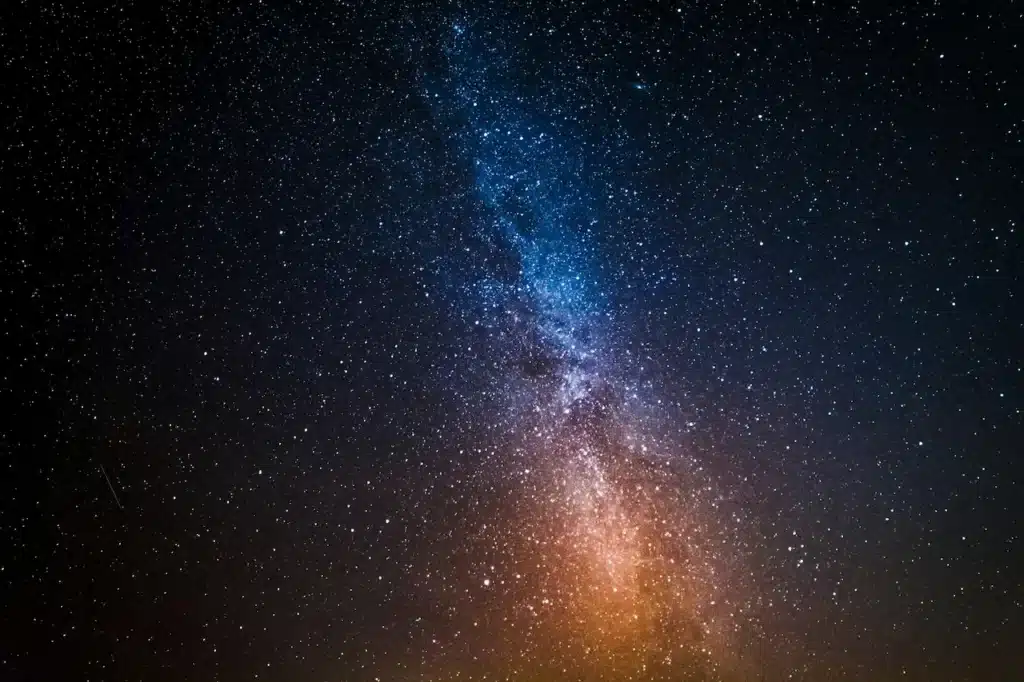The term cosmos, which is used interchangeably with universe, has a deeper meaning. It suggests an orderly, harmonious system, rather than a vast collection. The cosmos includes everything: space, time, and energy. It also encompasses the laws of nature that govern them. How has the human understanding of the universe evolved? This blog explores the rich and varied history of the cosmos, from ancient philosophies to cultural interpretations and the scientific revolution.
What is the Cosmos?
Cosmos is derived from the Ancient Greek term kosmos, which meant “order,” ornament,” or “adornment.” This implied a sense of arrangement and harmony. Pythagoras, an ancient Greek philosopher, used Kosmos as a term to describe the ordered universe. Later thinkers such as Anaxagoras proposed the idea that there was a cosmic intelligence or mind that organised everything.
The cosmos is not chaotic or random. It implies a structure, a system in which every element fits according to certain rules. This idea is the basis of many ancient and contemporary cosmologies. It combines scientific inquiry with philosophical and sometimes spiritual insights.
Early Philosophical Views on the Cosmos
Ancient thinkers tried to explain the structure and nature of the universe long before modern science was developed. They did this through observation, reason, and mythology. These early philosophies laid a foundation for our understanding of the universe, as they combined metaphysical ideas and primitive scientific inquiry.
Ancient Greek Perspectives
Ancient Greeks were the first to explore the universe systematically. Philosophers such as Thales believed that water was the source of all things, whereas others like Anaximander tried to discover the structure of the cosmos through geometrical analysis and observation.
Anaximander was among the first to suggest a mechanical universe model. He imagined Earth as a cylinder suspended in space with celestial objects like the Sun and Moon arranged in concentric circles around it. The geocentric model was an attempt to rationally explain celestial phenomena like eclipses and thunderstorms.
Plato and Aristotle refined this idea. Aristotle proposed that the cosmos is divided into two realms. The sublunary, below the Moon, is composed of four elements: earth, water, air, and fire, while the superlunary, above the Moon, is made up of a perfect, unchanging substance known as quintessence. This division emphasised a finite, hierarchical, and designed cosmos.
Orphics and Mysticism
Greek thought also incorporated mystical practices through groups such as the Orphics, who sought union with God through ritual intoxication. They had a profound influence on Greek philosophy. Pythagoras was a key figure in this, as he merged Orphic Mysticism and mathematical and philosophical inquiry. This fusion laid the foundation for later cosmological theory that combined spirituality and the physical universe.
Diverse Cultural Cosmologies
Many other cultures have their interpretations of the cosmos.
Chinese Cosmology
The ancient Chinese believed that the universe was infinite and connected to the Earth. The concept of Qi, the vital force or energy permeating everything, including humans, ideas, and emotions, was central to their understanding. The cosmos is viewed as a living entity with a dynamic equilibrium between yin-yang forces.
Chinese Xuan Ye described the universe as an endless expanse of floating vapours. This contrasted with Greek belief in a finite world. Their cosmology was based on patterns and cycles. Earthly phenomena affected celestial bodies, and vice versa.
Indian Cosmology
Indian cosmology introduced a concept of a cyclic world, in which time and space were infinite and the universe went through endless cycles of destruction and creation. The famous phrase “as in the body, so in the universe” encapsulates the Indian view of a microcosm-macrocosm relationship–reflecting an interconnectedness between the inner self and the cosmos.
The ancient Indian astronomers were also able to make remarkably accurate calculations. They calculated the speed of light and mapped out the relative positions and sizes of the planets and the stars. They did not centre their universe on Earth, but instead conceived of multiple “island worlds” that each went through its cosmic cycles.

Aboriginal Australian Cosmology
Indigenous Australian cosmology is one of the oldest traditions in astronomy. It was developed by Aboriginal peoples and Torres Strait Islanders. They were able to navigate vast lands and create calendars using their knowledge of the skies.
The Emu constellation, for example, was deeply symbolic and represented the connection between Earth, sky, and the stars. Indigenous peoples observed lunar phases to explain ocean tides. They demonstrated sophisticated empirical understanding long before Western science accepted these ideas.
The European Medieval View of the Celestial Spheres
In medieval Europe, the cosmos, as seen through a divinely-created lens, was a finite system. The sublunary world, which was a place of change and decay, was separated from the heavenly universe, which consisted of perfect spheres, unchanging and without variation, that held the planets and stars in their orbits.
For centuries, this geocentric view developed by Aristotle & Ptolemy dominated. The stars were fixed on the outermost celestial sphere, which was composed of quintessence.
Celestial spheres were not only scientific, but also deeply theological. It strengthened the idea that the universe is governed by divine purpose and order.
The Copernican Revolution – A New View of the Cosmos
In the 16th century, cosmology underwent one of its most important paradigm shifts. Nicolaus Copernicus proposed a heliocentric model, where the Sun was the centre of the Universe, rather than the Earth.
Copernicus’s work was not only influenced by his observations of astronomy, but also by the Neoplatonic Philosophy, which saw the Sun as the symbol of the Divine. In his seminal De Revolutionibus Orbium Coelestium, he described the motions and positions of the planets as they orbited the Sun. He also suggested that Earth is just one among many planets.
Although his ideas initially faced resistance, particularly from religious authorities, they laid the foundation for modern astronomy. Galileo and Kepler were later scientists who built on Copernicus’s model. This led to a dynamic understanding of the cosmos.
Modern Scientific Cosmology
Cosmology is an interdisciplinary science that examines the origins of the universe, its structure, its evolution and its fate it will have. Physical cosmology makes use of the tools from physics, such as general relativity, thermodynamics, and quantum mechanics, to understand the universe, from its beginnings up until the present.
Modern cosmologists are interested in phenomena such as cosmic microwave background radiation (CMBR), dark matter, dark energy, and the expansion of the universe. They also investigate speculative ideas such as multiverses, hypothetical collections of many universes and cosmic inflation, a rapid expansion in the earliest moments after the Big Bang.
Recent observations from the James Webb Space Telescope have questioned parts of the Standard Model of Cosmology. This suggests that our understanding of the cosmos remains incomplete and is evolving.

Philosophical and Metaphysical Cosmology
Cosmology is a field that encompasses both the physical sciences and a wide range of philosophical and metaphysical issues. It aims to answer questions regarding the nature of life, the origins of the universe, and the ultimate meaning of the universe.
Philosophers of cosmology examine how human knowledge fits in the larger cosmic picture, and they grapple with the limitations of scientific explanations. They use metaphysics, philosophy of science, and epistemology to examine the cosmos in its entirety, often integrating insights drawn from religion, culture, and spirituality.
Conclusion
Over the millennia, human conceptions of the universe have changed dramatically. From ancient myths to philosophical musings and sophisticated scientific theories. The cosmos represents more than just stars and galaxies. It is also a symbol of mystery, order, and human search for understanding.
We continue to discover the mysteries of the universe as science advances. It is more dynamic, complex, and beautiful than we ever imagined. Even as it reveals its secrets, the cosmos remains a source of wonder and inspires us to reflect on our place in this grand tapestry.





